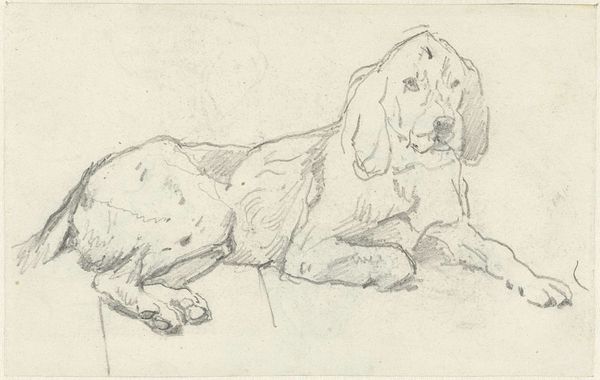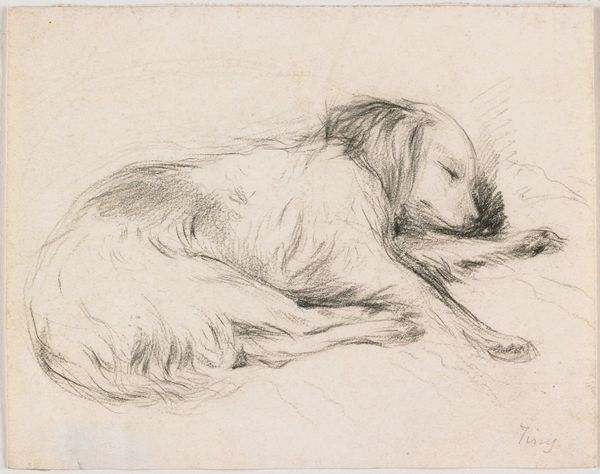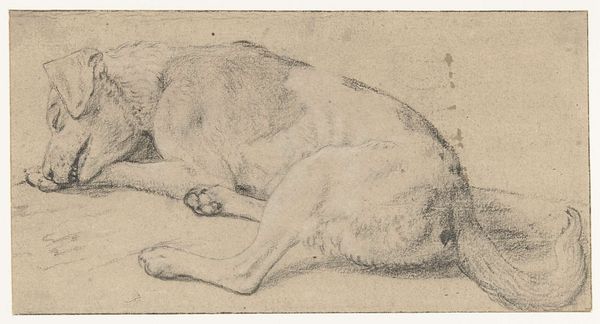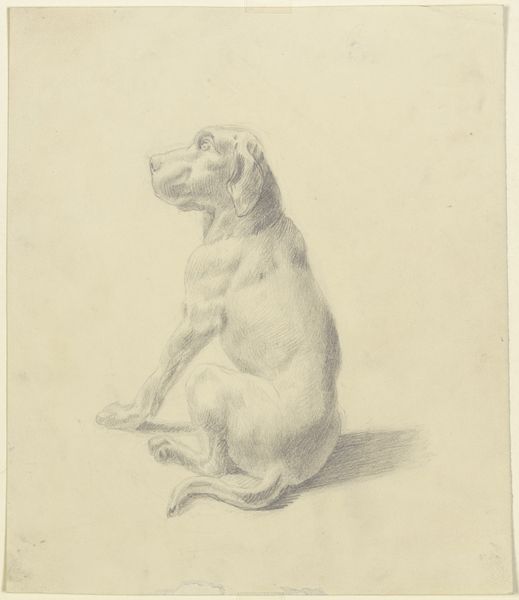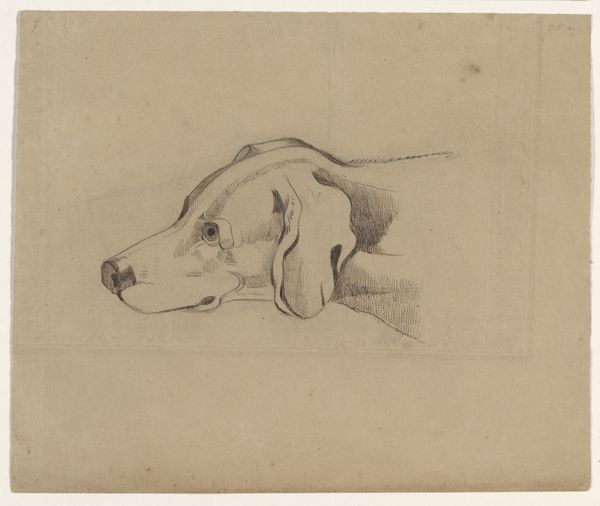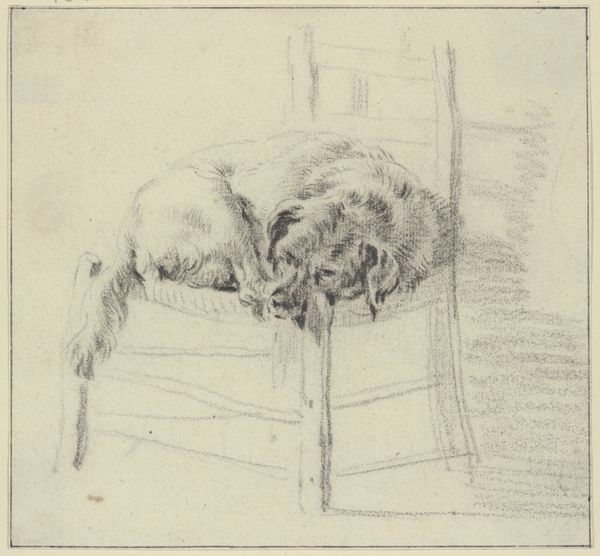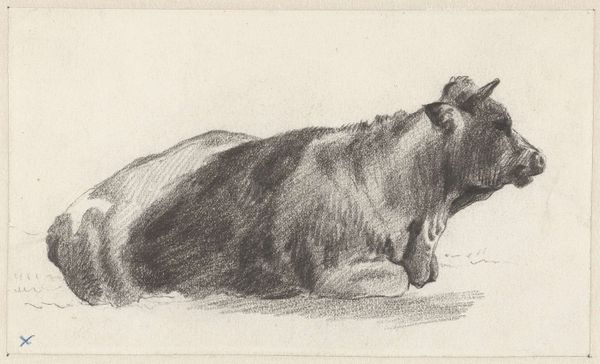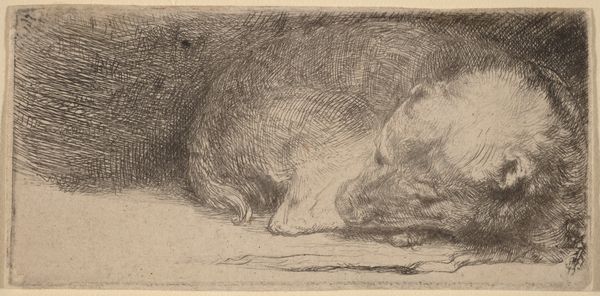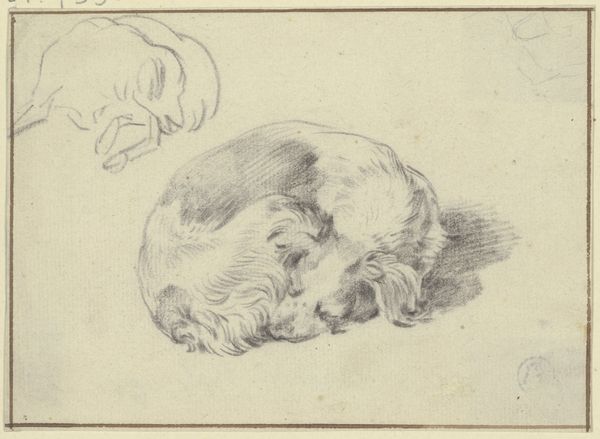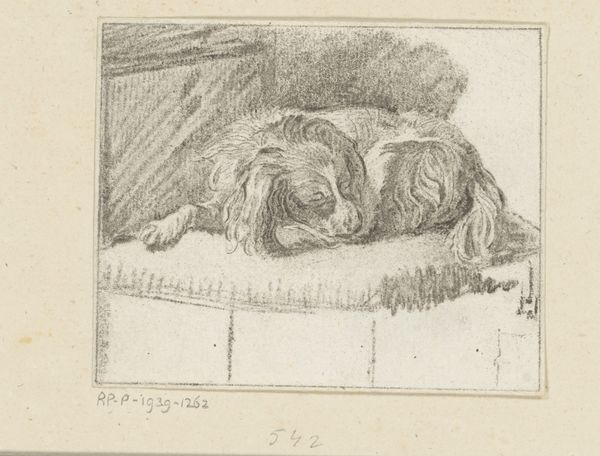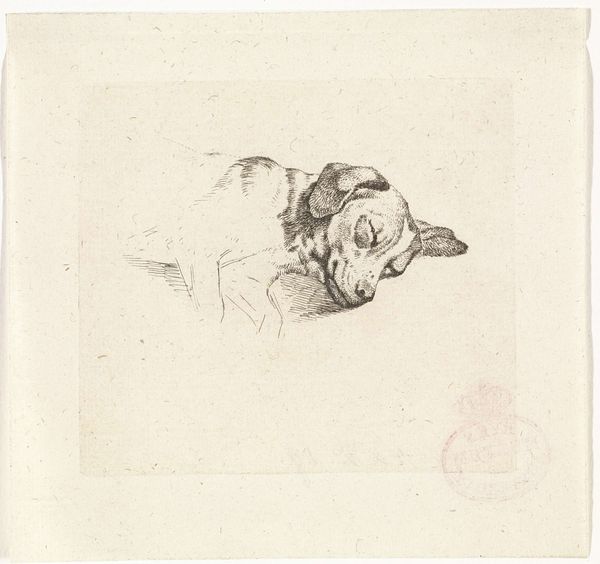
drawing, print, paper, pencil, graphite
#
portrait
#
drawing
#
animal
# print
#
pen sketch
#
paper
#
pencil drawing
#
romanticism
#
pencil
#
graphite
#
realism
Dimensions: 114 × 171 mm
Copyright: Public Domain
Editor: We're looking at "Reclining Lion, From Back," a graphite drawing made around 1816 by Edwin Landseer, now residing at The Art Institute of Chicago. There's a quiet stillness to this drawing. It's a very detailed depiction of the animal, almost sculptural in its form, yet it still manages to capture something of its interior life. What do you see in this piece? Curator: For me, it's all about the curl, isn't it? The curl of the lion's body suggests slumber and peacefulness, that inherent sense of royalty just switched off for a time. I'm captivated by how Landseer uses graphite to create this tactile quality – I can almost feel the rough texture of his mane, even without the colours or physical sensation. It reminds me a bit of my old tabby, Clementine. Always imperious, unless napping. Do you think it has any romantic notions or symbols of royalty for the artist? Editor: Well, lions are often seen as symbols of strength and majesty, especially within the context of Romanticism. Landseer was only a teenager when he made this, wasn't he? Do you think the drawing also plays on that romantic vision? It has almost photographical details. Curator: Absolutely! I wonder, then, what Landseer wanted to convey? Was it a study of power in repose, a quiet subversion, perhaps? Or even a comment on man and beast's interconnectedness? It feels very grounded, though the subject is usually a grandiose, epic creature. Did that initial realism serve only for him to get past what was generally accepted for its symbolism, if any? Editor: It's funny how a simple drawing of a reclining lion can open up all these lines of questioning! I will certainly reconsider this in new ways! Curator: Me too! I'm going to name my next tabby Edwin! It has been quite fun speaking with you!
Comments
No comments
Be the first to comment and join the conversation on the ultimate creative platform.
